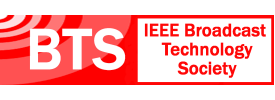- About
- Members
- Sponsors
- Subcommittees
- Technical Documents
- News
- Events
- Spotlight ATSC 3.0
- Contact Us
- Member Login
- Member Meetings
- Advanced Search
Search Site
Member Links
- About
- Members
- Sponsors
- Subcommittees
- Technical Documents
- News
- Events
- Spotlight ATSC 3.0
- Contact Us
- Member Login
- Member Meetings
- Advanced Search
ATSC Approves Synchronization Standard For Distributed Transmission – Press Release
Posted on August 19, 2004 in Press Releases
For Immediate Release
WASHINGTON, D.C., August 19, 2004 – The Advanced Television Systems Committee (ATSC) has approved a standard designed to facilitate the construction of single frequency network (SFN) transmission systems utilizing distributed transmission. The new standard defines the mechanisms for synchronization of transmitters emitting 8-VSB signals in accordance with the ATSC DTV Standard (A/53C). It also provides for adjustment of transmitter timing and other characteristics through additional information carried within the specified packet structure. Distributed transmission involves the use of a separate distribution channel to feed each transmitter in an SFN. This channel can be a conventional studio-to-transmitter link (STL) for distributed transmitters, or it can be a different broadcast channel from that on which the transmitters operate, in the case of distributed translators.
“Distributed transmission (DTx) holds the potential to greatly improve the coverage and service areas of DTV transmission,” said ATSC President, Mark Richer. Richer further explained that “distributed transmission systems must be carefully implemented, so we (ATSC) are in the process of developing a companion Recommended Practice on the design of synchronized multiple transmitter networks.”
ATSC Standard A/110 can be downloaded from atscnextgentv.vp77wsn4-liquidwebsites.com/standards.html at no charge. This document includes several informative sections that explain the distributed transmission concept in general, and synchronization methods in particular.
The Advanced Television Systems Committee, Inc. is an international, non-profit organization developing voluntary standards for digital television. The ATSC member organizations represent the broadcast, broadcast equipment, motion picture, consumer electronics, computer, cable, satellite, and semiconductor industries.
–END–
Contact:
Lisa Hester, ATSC (202) 828-3130
Posted in Press Releases
News Categories
News Archives
Subscribe
Subscribe to The Standard, our monthly newsletter. Learn More
Join ATSC
ATSC is a membership organization with both voting and observer categories. Voting members include corporations, nonprofit organizations, and government entities, and they participate actively in the work of ATSC. Observers are individuals or entities not eligible to be a voting member.
Subscribe to our Newsletter
Subscribe to The Standard, our monthly newsletter, to stay up-to-date with ATSC news and events around the world.
Site Links
Contact Us
Advanced Television Systems Committee, Inc.
1300 I Street NW, Suite 400E
Washington, DC 20005
Do you have questions about ATSC?
About ATSC
The Advanced Television Systems Committee, Inc., is an international, non-profit organization developing voluntary standards and recommended practices for digital terrestrial broadcasting. ATSC member organizations represent the broadcast, broadcast equipment, motion picture, consumer electronics, computer, cable, satellite, and semiconductor industries. ATSC also develops digital terrestrial broadcasting implementation strategies and supports educational activities on ATSC standards.
© 2025 ATSC




































